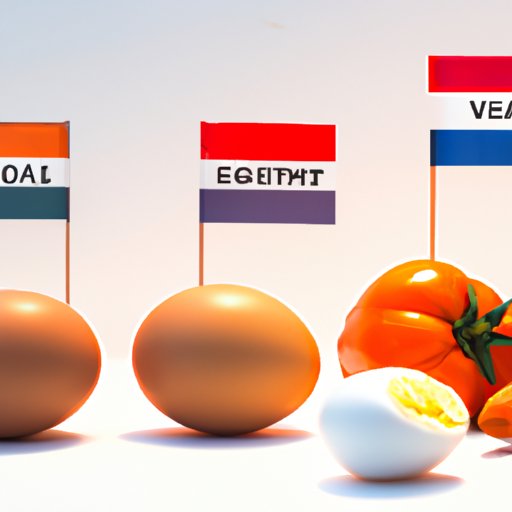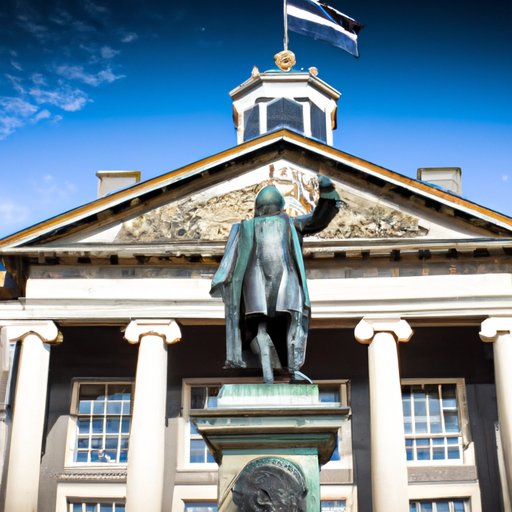I. Introduction: Welcoming the Audience to the Country of Orange
The Netherlands, also known as Holland, is famous for many things including windmills, tulips, cheeses, and of course, the color orange. It is a vibrant and culturally rich country that values diversity, creativity, and individualism. In this article, we will explore the historical and cultural significance of the color orange in Dutch culture, from its ties to the House of Orange and Dutch independence to its role as a symbol of royalty and national sports teams. We will also examine how orange has become an integral part of Dutch identity and nationalism.
II. The History Behind the Color Orange: Why the Netherlands Show their Pride
The use of the color orange in the Netherlands dates back to the 16th century when William of Orange led the revolt against the Spanish Empire in the Dutch War of Independence. The House of Orange-Nassau was established, and the orange color represented the royal family and their struggle for independence. In addition to its connection to Dutch royalty, orange was also a popular color in Dutch art, including works by Dutch Masters such as Vermeer and Rembrandt.
III. Exploring the Cultural Significance of Orange in Dutch Identity
Orange plays an essential role in Dutch culture and identity. It is the national color, and it has strong ties to national holidays such as King’s Day, which is celebrated every year on April 27 to honor the birthday of King Willem-Alexander. During King’s Day, the entire country turns orange, and people dress up in orange clothing and accessories. The color also represents Dutch national pride and patriotism, and it is common to see orange flags and decorations throughout the country during major sporting events.
IV. Why Orange is More Than Just a Color: The Symbolism of Dutch Royalty and National Sports Teams
Orange is not just a color in the Netherlands; it represents Dutch royalty and the national sports teams. William of Orange, also known as the Father of the Nation, is a significant figure in Dutch history. He led the Dutch struggle for independence from the Spanish Empire and played a pivotal role in establishing the House of Orange-Nassau. Today, the Dutch royal family continues to be associated with the color orange, and the modern-day monarchy celebrates King’s Day in the bright color, showcasing Dutch unity and pride.
Furthermore, orange has become a staple color in Dutch sports, particularly in soccer. The Dutch national soccer team, also known as Oranje, wears orange jerseys, and their fans dress up in orange clothing and accessories to support their team. It is not uncommon for Dutch soccer fans to paint their faces and bodies in the color during major sporting events. The Dutch soccer team has a strong fan base, and their use of the color orange is a sign of national unity and pride.
V. From William of Orange to the Dutch National Soccer Team: Understanding the Orange Craze
The orange craze in the Netherlands can be traced back to the country’s strong ties to William of Orange and his struggle for independence. The color became a symbol of national unity, pride, and patriotism. However, the craze reached new heights during major sporting events, particularly the soccer World Cup and the Euro Cup. It is common to see entire streets and public places decorated with orange flags, banners, and decorations, and people dressed up in orange clothing to support their team. The Dutch orange craze represents a unique form of national unity that is based on individualism, creativity, and tolerance.

VI. Orange as a Political Statement: The Dutch Identity and Unification
Orange can also be used as a political statement in the Netherlands. During times of war and political strife, the color has been used to unify the Dutch people. In World War I, for example, Dutch soldiers wore orange brassards to show their neutrality. During World War II, the color was used to resist Nazi occupation, and the orange flag became a symbol of Dutch resistance and liberation. Today, orange continues to represent Dutch identity and unification, as well as individualism and creativity.
VII. Understanding Dutch Nationalism: The Role of Orange in Continuity and Change
The use of orange in the Netherlands represents Dutch nationalism, which has evolved over time. In the past, it was associated with Dutch independence and resistance against foreign powers. Today, it represents a unique form of nationalism that values individualism, creativity, and diversity. Orange has become an integral part of Dutch identity, and it represents the continuity of Dutch culture and history while embracing change and progress.
VIII. Conclusion: Reflecting on the Significance of Orange in Dutch Culture and Identity
The color orange plays a significant role in Dutch culture and identity. It represents Dutch royalty, national sports teams, and national unity, and it has deep historical ties to Dutch independence and resistance. Moreover, it has become an integral part of Dutch culture and is associated with national holidays, traditions, and art. The orange craze during major sporting events demonstrates a unique form of national unity based on individualism, creativity, and tolerance. Orange continues to represent Dutch identity and nationalism, embracing continuity and change, and valuing diversity and individualism.
